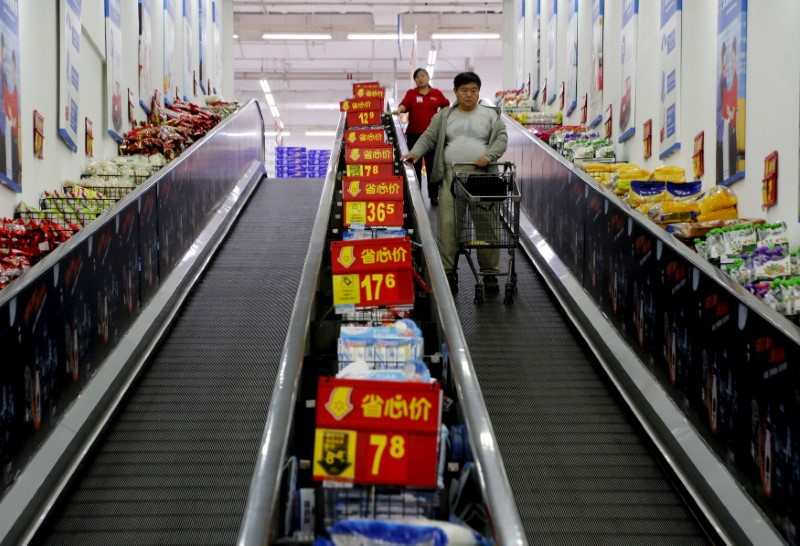(Bloomberg) -- China’s producer prices rose at the fastest pace in more than two years in February, fueled by surging commodity costs, while consumer deflation eased.
- The producer price index rose 1.7% from a year earlier, stronger than economists’ forecasts for a 1.5% increase
- The consumer price index fell 0.2% last month from a year earlier, following a 0.3% drop in January, the National Bureau of Statistics data said Wednesday. The median forecast in a Bloomberg survey of economists was for a 0.3% decrease
Resurgent producer prices raises the prospect of China exporting inflation to the rest of the world as factories start hiking prices for goods sold abroad. Bond markets have already been roiled by expectations that faster global growth and massive fiscal stimulus will push up inflation.
The biggest PPI gains were in mining, which climbed 6.8% in February from a year ago. Raw material prices rose 2.9% after several months of declines.
“Metal prices were on the rise due to global fiscal stimulus money to be spent on infrastructure projects,” said Iris Pang, chief economist for greater China at ING Wholesale Banking. “If crude oil price keeps increasing it would push up other prices, like transportation, and therefore production cost, then it could generate inflation.”
Core consumer prices, which exclude volatile energy and food costs, were unchanged from a year earlier. Falling pork prices, a key element in the country’s CPI basket, have been the main driver of weaker consumer inflation in recent months, with prices falling 14.9% in February from a year ago after declining 3.9% in January.
That trend could reverse with the re-emergence of African swine fever in Asia, which could threaten hog supplies once again. However, Lu Ting, chief China economist at Nomura Holdings (NYSE:NMR) Inc., points out that the statistics bureau made a downward revision to pork’s weighting in the CPI basket last month, a change that could keep prices elevated.
China’s government outlined new economic targets last week, setting a goal of about 3% for consumer inflation for this year, down from 3.5% in 2020. It’s aiming for economic growth of more than 6% as the recovery from the pandemic continues to strengthen.
Other Details
- Food prices fell 0.2% in February from a year ago after gaining 1.6% in January; non-food prices also declined 0.2% last month
(Updates throughout.)
©2021 Bloomberg L.P.
